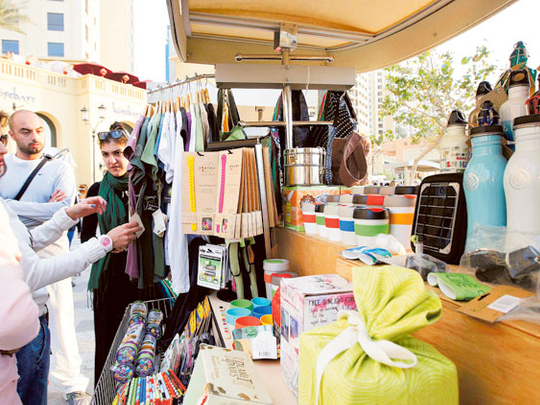
Retail has many different shapes and styles and in Dubai, most of them being in their most evolved forms. Little wonder the city was ranked the second hottest retail destination in the world in the CBRE annual survey for 2013.
One recalls the days in 1996-97 when trading businesses were just beginning to understand the power of this new way of shopping called destination malls. Early innovators jumped in quickly and many of them have grown hundred-, if not thousand-, fold by now. Others were nervous.
I remember calling together a group of retailers from the souk. “This is your opportunity, get together and go into this new mall; if you negotiate with them as a group you may even get a better deal...”, I remember telling them. But doubts flew thick and fast — “the rents are too high; our margins are too low; how can I go into a place where my competitor will be sitting right next to me; these malls are meant for tourists, residents will still come to the souq, etc.”, were the gist of the responses.
Some of the same retailers are now hugely successful with chains across the region. Some refused to innovate and fell by the wayside and disappeared.
Once the malls created the stores and the shopping ambience, it was not long before kiosks started appearing. But for brands this was seen as the kiss of death. “We cannot be seen in a kiosk,” they said. “It will hurt our image!”
So we ended up with hordes of boring kiosks full of unbranded and often dubious products, sprouting everywhere like mushrooms. But those were early days. How times have changed.
Not only are many well-known brands in kiosks today, the very concept has developed to a high level of sophistication with many international names creating their own branded kiosks. Indeed some have actually entered the market using this route as a way to test the market before making a full-fledged investment in a store.
As would be expected, developers soon discovered in kiosk rentals a powerful revenue stream, often making money from what would otherwise have been dead areas. In fact things got a bit out of hand and some of the malls discovered recently that their kiosk leasing strategy had reached the point where movement space for customers was being seriously compromised.
They also realised that they had ended up with large numbers of similar kiosks selling similar if not the same products, all jostling within the limited space — and not really adding to the customer experience at all.
It is well known that in the top two or three malls, depending on the location, the rental for a kiosk could be as much as Dh60,000 to Dh100,000 per month — a mind boggling figure if you look at it in terms of the floor space that they occupy (usually a 3x3 metre square). But despite this attractive recovery, some of malls have had to take the decision to bring down the number of kiosks and carefully mix the concepts, so that they are varied, interesting and uncrowded.
Some developers have gone to extremes in terms of specifying the shape, size, height, finish and practically all aspects of the kiosk design (perhaps at the cost of making them look almost unexcitingly uniform), in order to create what they felt was a better environment and smoother flow.
A number of other innovations also seem to be happening. Some malls are offering their own shopping-cart kiosks on lease to prospective customers. This way, they restrict the space to a smaller footprint, maintain a uniform look and can move the carts around from time to time to keep the area looking fresh.
Another mall in Bur Dubai has just recently cleared practically half of its ground floor of vanilla shops and turned it into one large open space. Here they plan to lease spots for 15 to 20 kiosks — almost creating a souq or bazaar within the environs of a mall. It will be interesting to see how this works.
Without doubt, kiosks go a long way to build excitement and energy in what could otherwise be quiet and even boring spaces. The challenge is to find ways to remain fresh, varied, relevant, interesting and also to keep them affordable.
— The writer is CEO of Tridayle Consult FZE, a retail and business consultancy.












